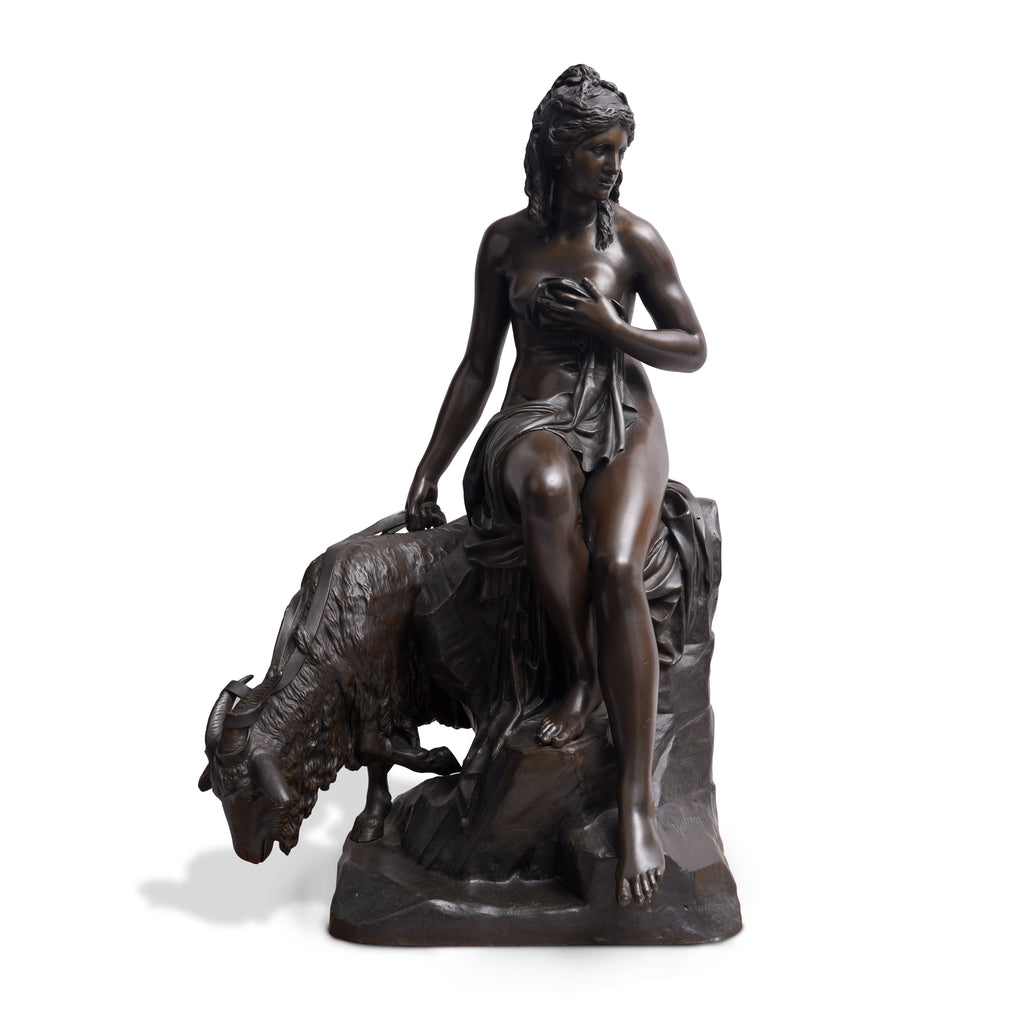FRENCH PATINATED BRONZE GROUP 'AMALTHEA & JUPITER'S GOAT' BY PIERRE JULIEN
Price upon request
FRENCH PATINATED BRONZE GROUP 'AMALTHEA & JUPITER'S GOAT' BY PIERRE JULIEN
This sizable 19th-century bronze group, titled "Amalthea and Jupiter's Goat," draws inspiration from Pierre Julien's work (French 1731-1804). The sculpture depicts the goddess Amalthea, portrayed in a state of nudity save for drapery covering her breasts and cascading down to her lap. She is seated atop the back of a goat, elegantly positioning her right foot upon a rock outcrop.
Signed: Julien
Height: 34" (86.3 cm)
Width: 21" (53.3 cm)
Depth: 15" (38.1 cm)
Pierre Julien's creation of "Amalthée et la chèvre de Jupiter" held significant historical and artistic importance. Initially commissioned by Louis XVI for the Château de Rambouillet, the sculpture aimed to enhance the appeal of the castle, which was not favored by Marie Antoinette. To cater to her preferences, Louis XVI secretly constructed the "Laiterie de la Reine" (the Queen's dairy) and commissioned the statue of Amalthea as its central piece between 1786 and 1787.
Art historian Michael Preston Worley praised this model as "one of Julien's greatest achievements." The original grand marble statue was eventually relocated to the Louvre in 1829, only to return to its original site at Château de Rambouillet in 1953.
The mythological narrative behind the sculpture is profound, depicting the nymph Amalthea tending to the infant-god Jupiter on the slopes of Cretan Mount Aigaion. In this myth, Amalthea nurtured Jupiter (Zeus in Greek mythology) in a cave, feeding him a diet of milk and honey. This act was to protect Jupiter from his father, Cronus, who had the habit of devouring his newborn children to prevent his own downfall as prophesied.













